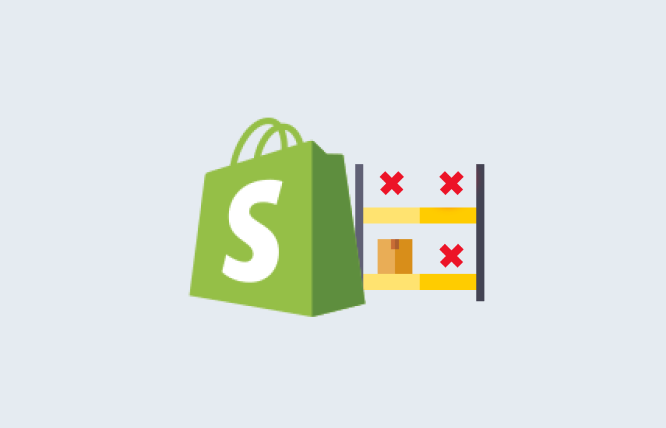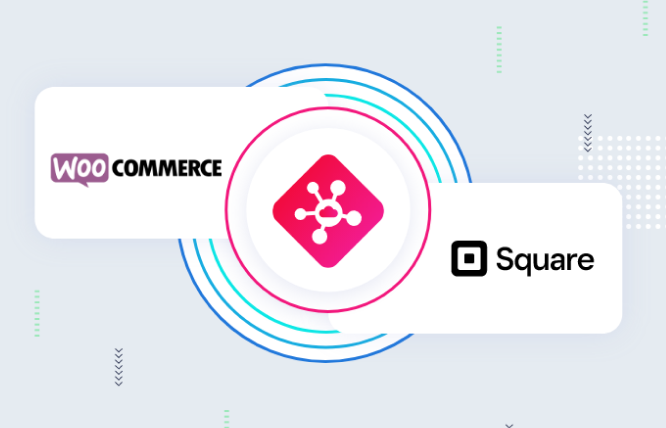Introduction
This blog will state how to sell products on Shopify without managing inventory in 2025. The important points discussed here are:
Today’s tech-savvy entrepreneurs are looking to make the most out of Shopify. Here, one of their objectives is to sell without inventory. This will allow them to avoid many hassles, and they will also be able to conduct a profitable venture. So, if you are this entrepreneur, then this is a must-read blog post for you. This is because it will serve as an excellent guide for you on How to sell on Shopify without Inventory. Furthermore, this is also a great read for those who are simply interested in the subject matter.
Understand that perhaps the most important thing here is for you to know how and what to sell online. If you are looking to start your online store with no inventory, you should perform some activities. This includes the assessment of your potential competitors, niche research, interacting with affiliate partners, searching for reliable suppliers, and performing SEO store optimization. If you are able to accurately answer How to sell on Shopify without Inventory – you will have a profitable and stress-free start.
If you want to magnify the overall gains that you get from this blog, it is advised that you go through Shopify store development services or perhaps a Shopify store builder service. While you are at it, do look into a woocommerce web developer too.
Top Business Models on How to sell on Shopify without Inventory
Are you looking to sell on Shopify and have no stock supplies? The good news for you is that you are still in a wonderful position to enter the e-commerce domain. This is great because you can avoid spending cash on shipping and inventory matters. Also, you will have to deal with simplified returns. On top of this, you greatly lower your risk factors.
The following are some of today’s best ways to sell on Shopify without inventory:

The Print-on-Demand (POD) Method
Here, you sell graphic designs that are applied to white-label products, like hoodies or t-shirts. In order to attain success with POD, you must have a reliable supplier at your disposal. This supplier will be responsible for taking care of your fabrics, and this entity will even perform the customization operations on your behalf.
Offering POD with the aid of Shopify may include your specialized work only. Another option is to collaborate with a well-known brand, and this is done by getting a licence. This will then raise the chances of you making instant-hit designs. After you have prepared some designs, it is at this stage that you post them on your store. Here, you also share your designs with your supplier, which you can do via an app. You can avoid any worry regarding shipping or production as your POD account will be in sync with your supplier.
Print-on-demand Pros
- Little financial risks
- No advance printing
- You don’t require manufacturing equipment
- A great e-commerce niche for beginners
Print-on-demand Cons
- Shipping can be time-consuming
- Limited production control
The Dropshipping Method
Many e-commerce experts consider it to be a smart method to sell your products where you don’t need to own inventory yet demand reliable results. Dropshipping lets you maintain the variety of products you offer your customers, bypass financial losses, and respond to their requirements. This is why it is commonly appreciated by those who answer the “How to sell on Shopify without Inventory” query. Here, you should get a trustworthy and suitable supplier. Also, the right Shopify dropshopping app will immensely ease your duties for you.
After you are done setting up your Shopify store and you start getting your orders, you need to order products from a warehouse. The products will be shipped to the buyer, and you will avoid dealing with shipping from your end. Furthermore, you get to avoid dealing with the manufacturing part, which means that you can dedicate more time towards creating a profitable platform, which will allow you to have better sales figures.
Dropshipping Pros
- No need for any upfront investment
- Low risks involved
- No manufacturing and shipping required on your behalf
- You get plenty of time for commercial enhancements
Dropshipping Cons
- Getting products from the warehouse may involve delays
- More than one manufacturer is required for product variety
Selling Affiliate Products Method
This is another highly beneficial method for those who want to avoid keeping an inventory. Here, you are supposed to sell your products with the assistance of your store. The products are from reliable affiliate partners. You avoid manually crafting products or the effort of seeking suppliers, which may come from third nations. But understand that if you demand a prominent profit, you need a good customer base. Additionally, make sure that you select affiliate products that will go well according to your e-commerce strategy. This will then allow you to increase the chances of potential customers finding your goods.
Generally, profits associated with affiliate marketing are dependent on proper linking to the affiliate page. When you are approved by a good affiliate program, like Amazon Associates, you must direct audience to them. It is a no-brainer that affiliate links are vital to knowing the success of your affiliate program. This is why you must monitor traffic and referral links with the assistance of the right Shopify affiliate apps.
Affiliate Pros
- A great revenue source
- You can refine affiliate marketing skills
- A small amount of time investment is required
- No need for extra spending or additional inventory
Affiliate Cons
- Small or no assurances of income
- You are not allowed to set pricing
Service Business Method
If you are a freelancer who wants to know How to sell on Shopify without Inventory, then a great piece of news for you is that Shopify is wonderful for you to begin your freelance career. You can also authorize online bookings associated with any existing service. There are a host of professionals who can sell real-life or virtual consultations with the assistance of an online store. This includes business consultants and copywriters. By doing so, you will almost effortlessly reach a big as well as more concentrated audience.
It is easy to start selling your business via Shopify. This is true because Shopify features an instinctive built-in website builder. You also have the option to include various third-party apps. These can assist you with better managing your clients, bookings, and more. Furthermore, Shopify is known to support a host of payment methods. This is great for those who work remotely, as they will be able to get payments.
Service Business Pros
- You can enhance your skills
- Offers assistance to reach a greater number of customers
- Suitable for a host of marketing strategies
- No inventory investment is required
- You can sell a great amount of services
Service Business Cons
- Lacking in physical character
- Troubling issues arrive when you are not easy to contact with
Shopify Marketplace
This is a very effective way to scale-up your e-commerce business, all the while avoiding inventory-related investments. If you are looking to operate a marketplace, then there is no need to create a new website. This is because there are Shopify apps for marketplaces that will assist you in effortlessly changing your existing store into a multi-vendor platform.
Here, it is important to state that there is no built-in Shopify functionality that lets you change your store into a marketplace. This is why it is very important for you to go with the appropriate marketplace application, as this is tied to a successful beginning of operations. Moreover, the app must automatically sync important details, such as product information. Also, you are required to divide the payment with the seller. While you do this, you must perform a careful evaluation of all the commissions and included fees. You may not be required to deal with shipping. Still, you should clearly mention shipping terms and costs on your site.
Marketplace Pros
- It can significantly raise your revenues
- A small amount of expenses is required
- Enhances the store’s credibility
- Increases the already existing customer base
- No inventory requirement
Marketplace Cons
- Revenue must be divided between the seller and you
- You may face complexities when managing customer support
Third-Party Fulfillment Centers
There is some debate about this method’s overall nature. Regardless, it is still assumed that it is a reliable method when you combine it with dropshopping. This is because it lets you order huge product volumes just so that you can enjoy better pricing. Additionally, 3PL companies look after all the operations. This means looking after the functions of shipping, warehousing, and others.
Many individuals who ask the “How to sell on Shopify without Inventory” query have come to commend that here, you will easily come across the right 3PL service, since they feature Shopify integrations. This means that you will be able to effortlessly contact them.
Third-Party Fulfillment Centers Pros
- There is a chance that you will encounter decreased shipping costs
- Your inventories will be managed for you
- Customers will enjoy an enhanced experience
- The surety of top-quality shipping procedures
- You can save your cash by a significant margin
Third-Party Fulfillment Centers Cons
- The majority of fulfilment centres won’t let you customize packages
- You cannot manage shipping processes
Concluding Remarks on How to sell on Shopify without Inventory
Entrepreneurs across the world who are looking to establish an online business are happy because the online Shopify store lets them sell almost anything. An entrepreneur can have very little capital with him or is not in a position to invest in inventory. Still, this person can learn How to sell on Shopify without Inventory, as this will allow the seller to reach a massive audience situated throughout the globe. So, if you are an ambitious entrepreneur who wants to sell on Shopify, then you must follow the important points stated in this blog.
Finally, Futurbyte is a reliable software solutions provider that is great for all those who wants to know how to sell on shopify without inventory or looking to sell on Shopify without inventory. Besides looking into Futurbyte, interested individuals should also look into a Shopify plus development agency as well as today’s best ecommerce developers. This can help them achieve highly beneficial results.
Also Read:Hire Someone to build Shopify Store
Frequently Asked Questions
To begin, you have the option of setting up a dropshipping store. At this stage, you can seek suppliers that are willing to offer reliable dropshipping services. It will be best if you thoroughly investigate their products. Then, if it suits you, integrate them into your Shopify store. Later on, when a person shops from you, it will be up to the supplier to fulfil your order. The supplier will also be responsible for directly shipping the order to the customer involved.
Dropshipping is actually a very simple thing to grasp. Basically, it is a business model in which you sell goods to customers. Here, you are not liable to hold inventory. Actually, whenever a person commences with a buyout, it is you who buys the product from a reliable third-party supplier. This supplier is then responsible for shipping the product to the customer.
Some of the most prominent advantages that you get are encountering lower startup costs and enjoying the flexibility to test a host of niches and products. In the latter case, you can do so without facing any sort of financial risk. Additionally, you will be able to emphasize customer service and marketing much more since you won’t be required to deal with any sort of inventory.
Have questions or feedback?
Get in touch with us and we‘l get back to you and help as soon as we can!




